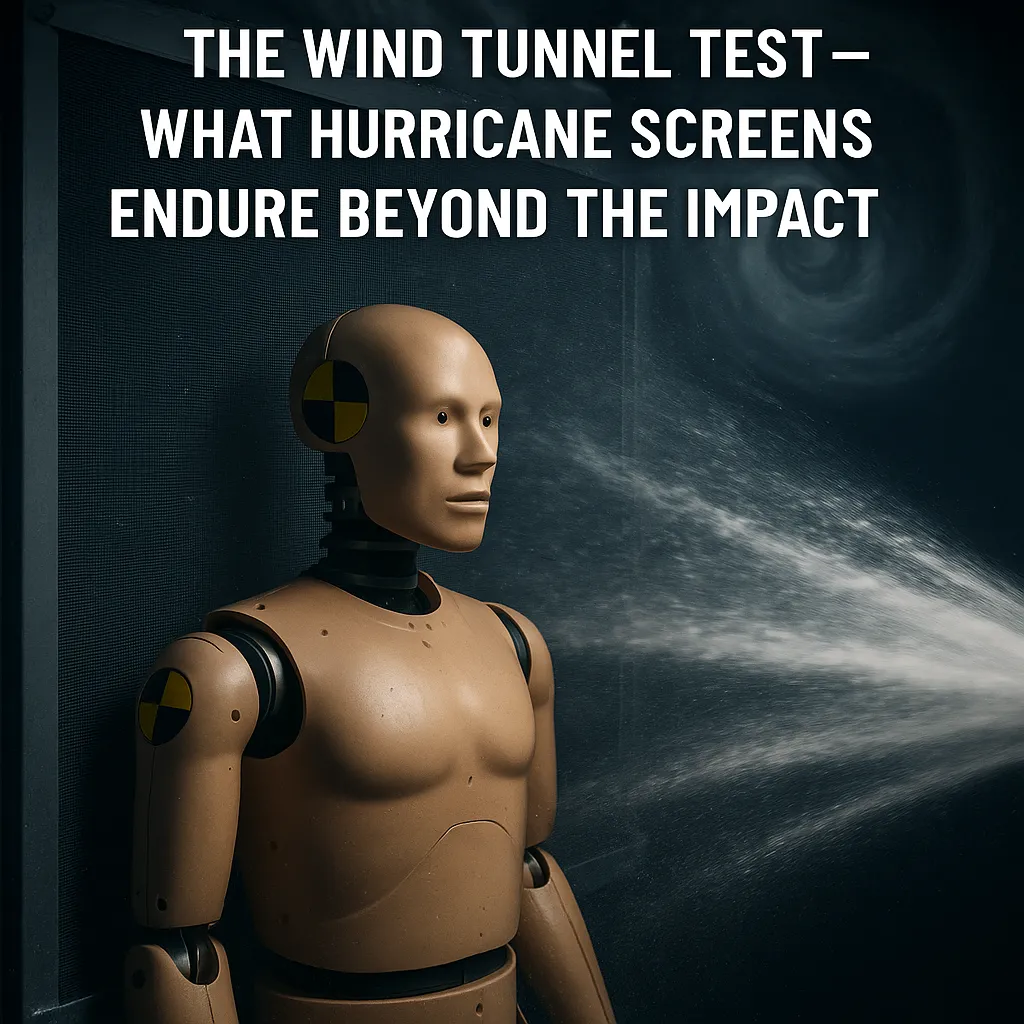
Beyond Impact: Why Hurricane Screens Must Pass the Wind Load Test
Impact is the Wrecking Ball, Wind Pressure is the Hurricane’s Breath.
You’ve seen how hurricane screens get pounded like car hoods in a crash test. But here’s the next question: What comes in the wake of the hit — when the storm continues to push? That’s where wind pressure testing comes in. The same way engineers of automobiles run tests to see how doors will fare in a rollover, screen makers simulate hours of hurricane-level winds to determine whether their product buckles, bows, buckles or blows apart. The standard? TAS 202 or ASTM E330. Consider it a wind tunnel test for your screen.
🚗 Analogy Time: Crash Test Dummies in a Wind Tunnel Think about it:
You take a car, put it in a wind tunnel and then, for 30-minute increments, you hit it with hurricane gusts, not a brief 5-second burst. That’s what TAS 202 simulates: Positive pressure: pushing the screen in, as the wind would the front of your house.
Negative pressure: sucking the screen outward (wind blowing past and pulling and from behind; this is roof-ripping wind). Your screen needs to do more than survive an impact — it needs to continue to perform intense pressure. No fluttering. No blowouts. No detachment from the frame.
🔬 Deconstructing TAS 202 / ASTM E330 TAS 202 is the reference cited by the Florida Building Code for testing of wind pressure.
ASTM E330 is the domestic equivalent of the structural performance of windows, doors and hurricane screens. Here’s what they test:
Air pressure loading corresponding to Category 5 hurricane winds (or custom design pressures).
Alternating positive and negative pressure to mimic real-life gusts.
A pass is when the screen and all parts remain whole: no rips, no separation, no alteration of any sort that disrupts the screen’s performance. 🧠 Why It Matters to You as a Homeowner You know those videos of a garage door collapsing and the roof flying away? That’s not just bad luck. It’s failed wind pressure resistance.
A screen that is badly made or not well fitted acts like a sail. After it gives, the storm gets inside — and the pressure destroys your home from the inside out. Which is why Florida Living Outdoor only offers systems like MagnaTrack, which have been engineered and tested to the strictest of standards. Exclusive self correcting track keeps screen tight under wind load.
What to Ask Before You Buy When you are investing in a screened-in patio or lanai, here+s what to ask your installer:
“Does this meet TAS 202 or ASTM E330?” “What pressure rating is this screen designed for?”
“Are you performing wind load with engineer-certified mounting systems?” If they can’t respond, move on.

💬 The bottom line: It Isn’t Just About Surviving the Hit …
It’s about standing strong after the hit, when the storm won’t stop. At Florida Living Outdoor, we handle each and every screen installation we do as if we are building a hurricane survival system. Because in Florida, it’s not if the wind blows … it’s when. ✅ Coming Next in Article 5: “Cyclone Cycles: What It Means to Pass a 9,000-Cycle Test” (Where we get into the repetitive impact/wind cycle testing — exhaustion tests for race cars.)
Find Out More or Schedule a Consultation Go visit how Florida Living Outdoor can help transform that Florida outdoor space into not just a little more usable — but a whole lot safer.
